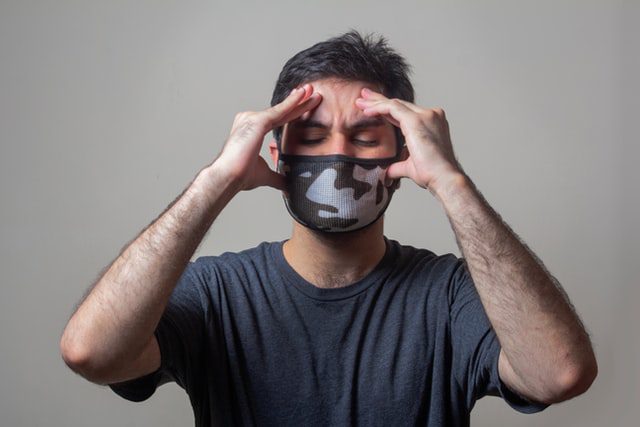From time to time, we experience a head-splitting session where all we want to do is to have someone hold our head and keep it from spinning. Most times, these headaches come unexpectedly. But then it can also come after activities like a workout, sexual intercourse, reading, etc. One of the common headaches are the ones you feel after a physical activity, and are called exertion headaches.
What Is An Exertion Headache?
Exertion headaches are headaches we experience after physical activities. It occurs after engaging in activities that require physical effort both major or minor, such as weight lifting, stretching, cleaning the house or even sneezing. The cause of exertion headaches differ from person to person and sometimes can be a symptom of an underlying health problem.
Types Of Exertion Headache
Exertion headaches are divided further into two types, and its division is based on the cause.
- Primary exertion headache – caused exclusively due to engagement in physical activity and it is generally harmless
- Secondary exertion headache – physical activity triggers this type of headache when there is an underlying disease such as tumor or coronary artery disease
Symptoms Of An Exertion Headache
Exertion headaches generally start with moderate to severe pain. This pain is often described as throbbing, which can sometimes be felt around the whole of the head, while sometimes appears in just one area, and usually starts after physical exercise or physical effort. Primary exertion headaches often don’t last long. They can last from five minutes to two days. Secondary exertion headache lingers on for a longer time and sometimes stays on for several days. Depending on what causes secondary exertion headache, it can also include other symptoms such as:
- Vomiting
- Double vision
- Stiffness of the neck
- Unconsciousness
Causes Of Exertion Headaches
Primary exertion headaches causes:
- Deep or intense exercise like running, weightlifting, or rowing
- Coughing
- Sneezing
- Orgasm
- Straining during a bowel movement
Secondary exertion headache causes:
This type of headache can be triggered by the same activities like that of primary, but are also linked to underlying conditions such as:
- Bleeding between the brain and tissues covering the brain, known as subarachnoid hemorrhage
- Tumors
- Sinus infection
- Coronary artery disease, which affects blood vessels leading to or within your brain
- Abnormalities of the neck or spine which is structural
- Obstruction of the flow of cerebrospinal fluid
Who Is Prone To Exertion Headaches?
People of all ages can have exertion headaches. However people above the age of 40 are at a higher risk. This is especially true if you:
- Exercise regularly in hot weather
- Exercise in high altitude
- Have a migraine history, either personal or family history
Diagnosing An Exertion Headache
Your doctor can diagnose this by asking you some personal questions to ascertain the cause. Be sure to provide accurate answers. Furthermore, they may also carry out some image tests to further ascertain the issue.
These image tests include a:
- CT scan – used to check for bleeding in or around the brain
- MRI scan – used to check for structures within the brain
- Angiography – includes magnetic resonance and CT, which can see the blood vessels leading into your brain
- Spinal tap – used to measure the flow of cerebrospinal fluid
Treating Exertion Headaches
Primary exertion headaches respond well to traditional medicine for headaches. Check with your general practitioner for available options. Secondary exertion headaches on the other hand, are treated by taking care of the underlying causes. If you are aware of the triggers and have a sense of when to expect a headache, you can take appropriate medication before engaging in activities that might trigger your headache. But if you are unaware of the causes, then you may have to take your medication more frequently in hopes of it curtailing a trigger.
Some medications are used to treat exertion headaches include:
- Indomethacin
- Propranolol
- Naproxen
- Ergonovine
- Phenelzine
Also, it is recommended to gradually warm up before any strenuous exercise.
Other Types Of Headache Besides Exertion
1. Tension headache
This is characterized by a dull aching sensation (that is not throbbing) and is experienced all over the head. You may also experience certain tenderness around your head, forehead, or scalp and anyone can get a tension headache.
2. Cluster headache
This headache is characterized by a severe burning and piercing pain which can be felt around or behind one eye or on one side of the face at a time. It can also be accompanied by swelling, redness, flushing, and sweating on the affected side. Cluster headaches can be said to occur in series as an individual can experience unto four headaches a day. Each headache can last from three minutes to three hours.
3. Migraine
This can be defined as intense pulsing from deep within the head. These headaches can greatly limit your ability to carry out your daily functions. Migraine is usually experienced one-sided on the head. Sensitivity to light and sound is common with migraine headaches. Some migraines are accompanied by visual disturbances like flashing lights, shimmering light, zigzag lines, stars, etc.
4. Allergy or sinus headache
The pain from this area is usually focused on your sinus area (around the cheeks, nose & lower half of forehead). It usually occurs as a result of an allergic reaction. A sinus headache can be a symptom of an underlying sinus infection. Most times, a sinus headache is usually misdiagnosed as a migraine headache. This is because almost 90 percent of sinus headaches are actually migraine headaches.
5. Hormone headaches
These headaches are usually associated with women. Hormonal fluctuations due to menstruation, birth control pills, and pregnancy affect the estrogen level, which in turn causes a headache.
6. Caffeine headaches
Consuming too much caffeine can give you a headache. This is because caffeine affects blood flow to the head; if you overload on excess caffeine in a day, your brain chemistry is affected causing a headache.
7. Hypertension headaches
When your blood pressure is extremely high, you may experience a headache. This kind of headache signals an emergency. This type of headache occurs on both sides of the head, and it gets worse when you engage in any physical activity. Changes in vision, numbness, and chest pain are accompanying symptoms.
8. Rebound headaches
This type of headache occurs due to medication overuse. People who use a lot of pain relievers are more susceptible to rebound headaches.
9. Post-traumatic headache
These headaches occur after a head injury and can last for 6-12 months after your injury.
Conclusion
Headaches can be uncomfortable but at the same time shouldn’t be taken lightly if it is persistent. Stay in touch with your doctor when it does become frequent.








